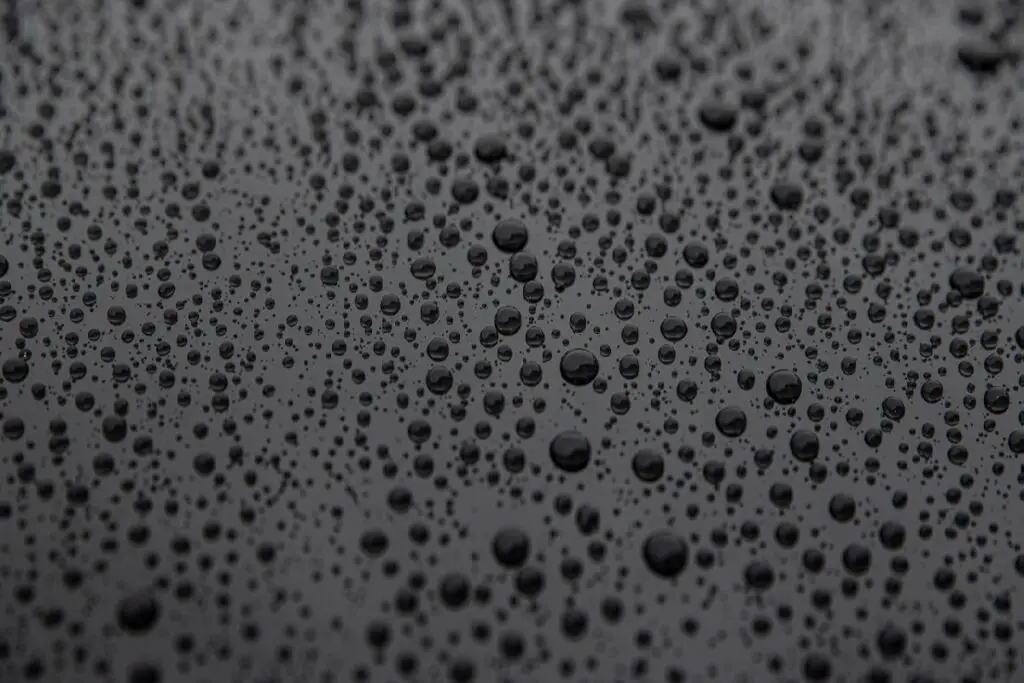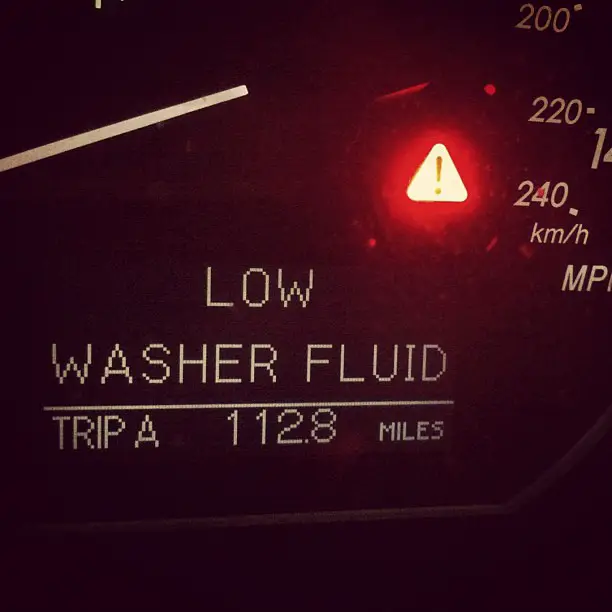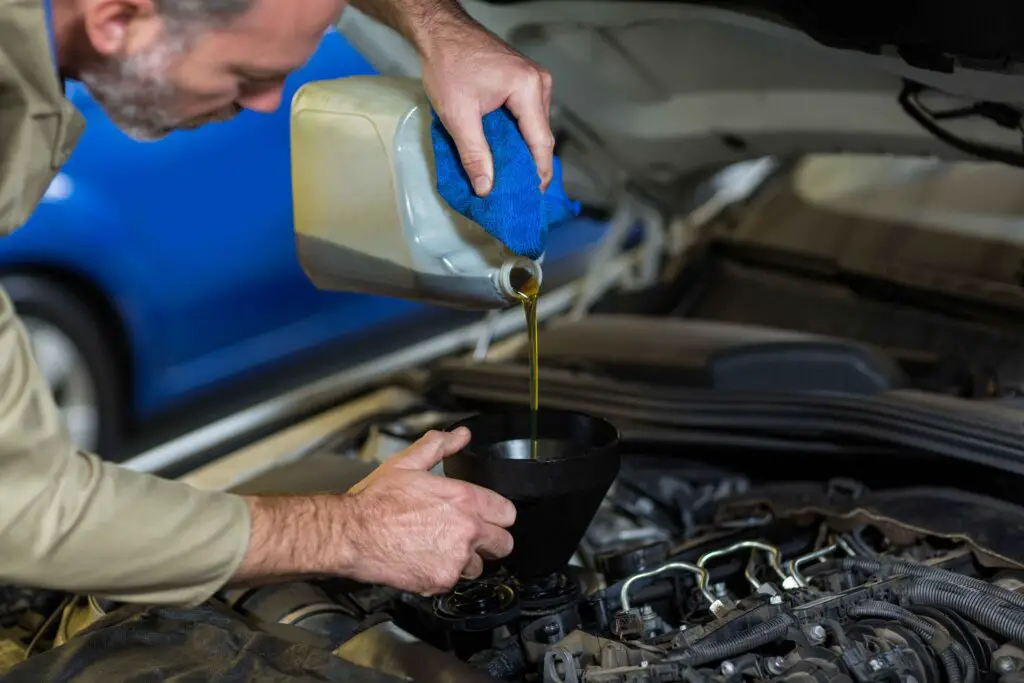Did you know that ceramic coatings can increase the resale value of your car by up to 10%? That’s because they make your car look more attractive and well-maintained, as well as protect it from various damages.
But before you rush to apply ceramic coatings to your car, you should be aware of some of the disadvantages of ceramic coating.
Ceramic coatings are not a magic solution that can solve all your car’s body problems.
They require careful preparation, polishing, and maintenance to work effectively.
In this article, we will reveal the practical disadvantages of ceramic coating and why they may not be suitable for everyone.
Contents

What is a ceramic coating?
Ceramic coating is a liquid polymer that bonds with a vehicle’s paint, creating a durable, hydrophobic layer. It enhances the car’s appearance while protecting against UV damage, chemical stains, and minor scratches. However, it’s not permanent and requires reapplication over time.
These coatings act like wax. However, despite its benefits, there are some disadvantages of ceramic coating to consider, such as objections from customers regarding the etching process on their cars and the potential impact on the PPF (Paint Protection Film).
What does ceramic coating do?
Ceramic coating offers several advantages for your vehicle. It provides protection against harmful UV rays, oxidation, and fading, helping to maintain the car’s original color and gloss with the help of coatings.
This ensures a shiny appearance that lasts for longer drives. With their hydrophobic properties, ceramic coatings make it easier to clean your car as water and dirt slide off the surface effortlessly.
Ceramic coating makes your car’s paint look shiny and smooth, giving it a stylish and polished appearance.
The application of ceramic coatings adds depth and gloss to the paintwork, enhancing the overall appearance of your car or truck.
The gloss of the paint creates a smooth and sleek finish on your car, making heads turn when you’re cruising down the road.
One of the major benefits of ceramic coatings for cars is that they reduce the need for frequent waxing or polishing.
Ceramic coatings provide a protective layer of paint that drives away the need for constant maintenance.
Unlike traditional waxes that wear off over time, ceramic coatings are designed to provide durable protection for your car’s exterior paint. They last longer, ensuring the longevity of your vehicle’s paint.
By forming a strong bond with the car’s paint surface, ceramic coatings create a protective layer that shields against car scratches and minor abrasions.
Coatings help preserve the quality of your car’s paintwork for years to come.
Ceramic coatings can also help maintain the resale value of your car by protecting the paint.
The long-lasting protection that coatings and paint offer ensures that your car looks well-maintained and attractive even after years of use.

15 Disadvantages Of Ceramic Coating
Light scratches can still occur
Ceramic coatings are really strong and tough, but they are not completely scratch-resistant.
These coatings are like a shield that goes on top of your car’s paint to keep it safe. They do a great job of protecting your car from things like dirt, rain, and even some small bumps.
Therefore, it requires some care and maintenance. But sometimes, even with the coating, you might see some light scratches on the surface.
These scratches can happen when something rough or sharp rubs against the coating.
It’s important to remember that ceramic coatings are not magic and can’t prevent all scratches.
But don’t worry too much because these scratches are usually not very deep and can be easily fixed with some polishing.
So even though ceramic coatings are super durable, they may need occasional polishing to remove light scratches
Expensive application process
Disadvantages of ceramic coating! Compared to other forms of car protection like wax or sealants, ceramic coatings can be quite expensive.
However, the long-lasting and durable nature of ceramic coatings makes them a worthwhile investment for those looking to protect their car’s paint and achieve a high-gloss finish.
Before applying a ceramic coating, it is important to properly prep the car’s surface to ensure optimal adhesion and performance.
The high cost is due to the quality of the coatings, paint, gloss, and ppf, as well as the labor-intensive application process involved.
So, if you’re on a tight budget and looking for an alternative to ceramic coatings, traditional paint may be a more practical option for your car’s gloss.
Getting a ceramic coating applied to your car can be quite expensive, especially when considering the cost of paint.
The paint process for a car requires professional expertise and specialized equipment, which ultimately adds to the overall cost.

Limited DIY options
Ceramic coating requires skilled professionals for proper application. You can’t just buy it and apply it at home like some other car care stuff.
Ceramic coating is a unique type of paint that requires skilled professionals to apply it correctly. They have to be really careful and know exactly how to do it right.
This means that if you like to do things yourself and take care of your car on your own, ceramic coating might not be the best choice for you.
Time-consuming application process
Applying ceramic car coating takes a lot of time and effort, which is just another disadvantage of ceramic coating. First, you have to make sure that the car’s surface is super clean.
This means washing it with soap and water and then drying it completely. After that, you need to prepare the surface by removing any dirt, grease, or old wax.
This can be done by using a clay bar or a special cleaner. Once the surface is all prepped and ready, you can start applying the ceramic coating.
But wait, there’s more! You can’t just apply one layer and call it a day. No, no, no! To get the best results, you need to apply multiple layers of the coating.
This means waiting for each layer to dry before applying the next one. And guess what?
Each layer can take anywhere from 30 minutes to an hour to dry! So, as you can see, the whole process can take quite a bit of time.
But hey, good things come to those who wait, right?
A professional application is required.
The disadvantages of ceramic coating include a complex application process that requires the application of multiple layers of paint, gloss, and wax. Additionally, proper preparation and curing time are necessary.
For the ceramic coating or clear coat to be effective and long-lasting, professional application is advised.
This ensures that the coating is applied correctly and uniformly.
Optimal protection is only guaranteed with a high-quality coating.
However, this implies additional expenses, as professional services or a specialized detailing shop would be required for the application of clear coat paint coatings.
For the best results, it is suggested to have the ceramic coating applied professionally to your vehicle.
This necessitates locating a trustworthy detailer or shop that offers this specialized service.

Difficult to remove once applied
If you decide that you no longer want the ceramic coating on your car or if it becomes damaged or worn out, removing the coatings can be challenging.
It often requires professional assistance and specialized car coating products to safely strip off the coatings without damaging the underlying paintwork.
This is especially important for maintaining the glossy finish of your car, ensuring it drives smoothly and looks its best.
Once the ceramic coating is applied, it forms a strong bond with the vehicle’s paintwork.
Removing it can be a challenging task that often requires professional assistance. which just adds to the disadvantages of ceramic coating.
Limited availability
Ceramic coatings are a great way to keep your car looking shiny and new for a longer period of time.
These are high-quality coatings that offer superior protection and longevity. However, they are typically not sold to the general public.
Instead, they are often reserved for use by certified professionals or detailing shops.
The reason for this is twofold:
Firstly, these professional-grade coatings require a certain level of expertise to apply correctly. If not done properly, they can cause damage to the car’s paintwork.
Secondly, these coatings are usually more expensive than their consumer-grade counterparts.
This is due to their enhanced protective qualities and the fact that they often come with a warranty.
Limited Repair Options
If your car has a ceramic coating and it suffers some damage or requires repair, you should be aware of a few things.
One of the disadvantages of ceramic coating is that it can be hard to fix.
Unlike other types of coatings, if a small area of the ceramic coating gets damaged, you can’t just fix that one spot.
Instead, you might have to reapply the entire coating to make it look good again.
This means more time and money spent on fixing the damage. So, it’s important to be careful and avoid any situations that could cause damage to your ceramic-coated vehicle.
Susceptible to Water Spots and Stains
Despite the numerous advantages of ceramic coatings, they do come with a few drawbacks.
One such disadvantage of ceramic coating is its susceptibility to water spots and stains if not properly cared for.
Water spots are frustrating marks that form on the ceramic coating’s surface when water evaporates, leaving minerals behind.
Stains, conversely, can develop when materials like oil or dirt come into contact with the coating and are not cleaned off immediately.
These spots and stains can detract from the ceramic coating’s shine and cleanliness.
To avert this, it’s crucial to consistently clean and upkeep your ceramic coating.
This can be achieved by cleansing it with a mixture of mild soap and water and using a soft cloth or sponge to gently remove any dirt or grime.
Additionally, it’s recommended to thoroughly dry the coating after washing to prevent water spots.
By adhering to these straightforward measures, you can maintain your ceramic coating in top condition and sidestep the inconvenience of dealing with water spots and stains.
No Permanent Solution
While ceramic coatings can last for several years with proper maintenance, they are not permanent solutions for car paint.
The gloss and durability of the ceramic coating can protect the car’s paint from damage, but it is essential to properly prep the surface before applying the coating.
Over time, the paint coatings will wear off due to exposure to environmental factors such as UV rays and harsh chemicals from car washes.
The loss of coatings can result in a decrease in gloss and affect the overall appearance of the car. Regular maintenance is required to ensure its effectiveness.
Although ceramic coatings offer long-lasting protection, they are not permanent solutions.
Over time, the coating will wear off and require reapplication to maintain its effectiveness.
Not a Substitute for Proper Washing
Even though you have a ceramic coating on your car, it’s still super important to wash it regularly.
You might be thinking, “But wait, won’t the coating make my car stay clean all the time?” Well, not exactly.
See, the ceramic coating is like a shield that protects your car’s paint from things like dirt and debris. It’s really good at keeping those nasty things away.
But it doesn’t mean you can just forget about washing your car altogether.
You still need to give your car a good scrub every now and then to get rid of any stubborn dirt that might have stuck to the coating.
Plus, regular washing helps to maintain the shine and glossiness of your car’s paint.
So, don’t skip out on washing your car just because you have a ceramic coating. Give it some love and keep it looking fresh and clean!
Limited Heat Resistance
Ceramic coatings are pretty cool because they can protect things from getting too hot. But you know what?
They’re not like superheroes with superpowers! They can’t handle extreme heat all the time.
If something really, really hot touches the coating, it can get damaged or start to break down.
It’s like when you leave your ice cream out in the sun for too long—it starts to melt and get all messy.
The same thing can happen to ceramic coatings if they’re exposed to super-high temperatures for a long time.
So, it’s important to be careful and not expect them to be able to handle crazy heat levels all the time.
Can’t prevent all environmental damage
Ceramic coatings are really great because they can help protect your car’s paint from some things that can hurt it.
But, you know what? They can’t protect your car from everything! There are still some things that can cause damage to your car’s paint, even if you have a ceramic coating on it.
One of those things is acid rain. Acid rain is rain that has chemicals in it that can be really bad for your car’s paint. Another thing that can cause damage is bird droppings.
Yeah, I know, it’s gross! But those bird poops can actually eat away at the protective coating and make your car’s paint look not so nice.
And guess what? Tree sap can also cause damage to your car’s paint, even if you have a ceramic coating on it.
Tree sap is sticky stuff that comes from trees, and if it gets on your car and stays there for a long time, it can make your car’s paint look dull and yucky.
So, while ceramic coatings are really good at protecting your car’s paint from some things, they can’t protect it from everything.
Potential Incompatibility with Some Surfaces
One thing to keep in mind about ceramic coating is that it might not be the best choice for all types of surfaces.
For example, if you have a surface made of rubber or plastic, ceramic coating may not work as effectively.
This is because ceramic coating is specifically designed to bond with certain materials, like metal or glass, and may not adhere properly to surfaces that are more flexible or have a different composition.
So, before deciding to apply a ceramic coating, it’s important to consider the material of the surface you want to protect and make sure it is compatible with this type of coating to help overcome the disadvantages of ceramic coating.
Water Spot Visibility
Another thing you should know about ceramic coating is that it can make water spots more visible on surfaces that have been coated.
When water dries up on a coated surface, it can leave behind minerals or residue, which can create marks that don’t look very nice.
This means you have to be extra careful and make sure to dry your car really well after washing it or when it gets wet from rain.
You don’t want those unsightly marks ruining the beautiful shine of your ceramic-coated vehicle!
So, remember to give your car a good wipedown after any water exposure to keep it looking its best.

Should you invest in ceramic coating?
Consider Your Budget
Before deciding whether to invest in ceramic coating services, it’s important to consider your budget. Ceramic coatings can be quite expensive, so make sure you have enough funds set aside for this type of investment.
Evaluate long-term protection and appearance enhancement
Another factor to consider is the level of long-term protection and appearance enhancement you expect from ceramic coating.
While it does provide a layer of protection against scratches, UV rays, and chemical contaminants, it’s important to manage your expectations.
A ceramic coating won’t make your car completely invincible or immune to damage.
Assess maintenance requirements
After applying ceramic coating, proper maintenance is crucial for its effectiveness.
This means regular washing and detailing to keep the coating in good condition.
Consider whether you have the time and resources to dedicate to this level of maintenance before making a decision.
Consult with professionals
To determine if ceramic coating suits your specific needs, it’s highly recommended that you consult with professionals who specialize in this service.
They can assess your vehicle’s condition and provide expert advice on whether ceramic coating is a suitable option for you.
Investing in a ceramic coating can offer benefits such as enhanced shine, easier cleaning, and added protection for your vehicle.
However, it’s important to carefully weigh these advantages against the potential disadvantages discussed earlier.
By considering your budget, managing expectations regarding long-term protection and appearance enhancement, assessing maintenance requirements, and consulting with professionals, you’ll be able to make an informed decision about whether ceramic coating is right for you.
Pros of Ceramic Coating
Ceramic coating has its fair share of advantages that make it a popular choice among car enthusiasts. Let’s take a look at some of the pros of ceramic coating:
Ceramic coating enhances protection, maintains a lasting shine, reduces maintenance, offers chemical resistance, and delivers long-term savings for car enthusiasts.
key takeaway points
- Ceramic coating has some practical downsides that users should be aware of.
- It can be challenging to maintain the initial shine of ceramic-coated surfaces.
- Water spots are more visible on ceramic-coated surfaces compared to non-coated ones.
Conclusion
While ceramic coating offers several advantages, such as enhanced protection and a glossy finish, it also comes with its fair share of disadvantages.
As discussed in the sections above, some of the disadvantages of ceramic coating include the high cost of application, limited durability, and the need for meticulous preparation before application.
Ceramic coatings can be prone to water spotting and require regular maintenance to maintain their effectiveness.
Despite these disadvantages, whether or not you should invest in ceramic coating ultimately depends on your specific needs and preferences.
If you prioritize long-lasting protection and are willing to invest in ongoing maintenance, ceramic coating could be a worthwhile option for preserving your vehicle’s appearance.
However, if budget constraints or a desire for a more temporary solution are factors for you, alternative options may be worth considering.
For those considering ceramic coating as an investment in their vehicle’s longevity and aesthetics, it is crucial to thoroughly research reputable applicators who adhere to industry standards.
Reading customer reviews and seeking recommendations from trusted sources can help ensure a positive experience with satisfactory results and will help you choose your disadvantages of ceramic coating wisely.
FAQs
1. How long does the ceramic coating last?
Ceramic coatings typically last between two and five years, depending on various factors such as the quality of the product used, proper application techniques, and maintenance practices.
Regularly washing your vehicle using the recommended methods can help prolong the lifespan of the coating.
2. Can I apply the ceramic coating myself?
It is better to have professionals apply ceramic coating instead of doing it yourself.
They know how to prepare the surface and apply it correctly. If you do it wrong, your vehicle’s paint can get damaged, and the results may not be as good.
3. Is the ceramic coating scratch-proof?
Ceramic coatings provide an additional layer of protection against light scratches and swirl marks; however, they are not completely scratch-proof.
It is still important to handle your vehicle with care and avoid abrasive materials during cleaning.
4. Can I wax my car after applying a ceramic coating?
It is not necessary to wax your car after applying a ceramic coating, as the coating itself provides a protective layer and a glossy finish.
In fact, waxing may interfere with the performance of the ceramic coating. It is best to follow the manufacturer’s recommendations for maintenance.
5. Can the ceramic coating be removed?
Yes, ceramic coatings can be removed; however, the process can be time-consuming and labor-intensive.
It often requires abrasive techniques such as machine polishing or sanding to remove the entire coating from the vehicle’s surface.




Leave a Reply